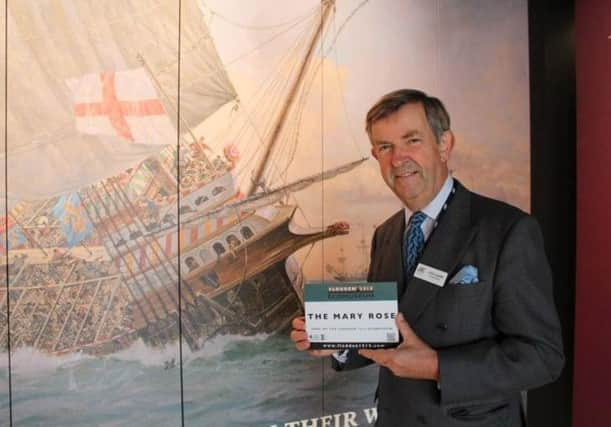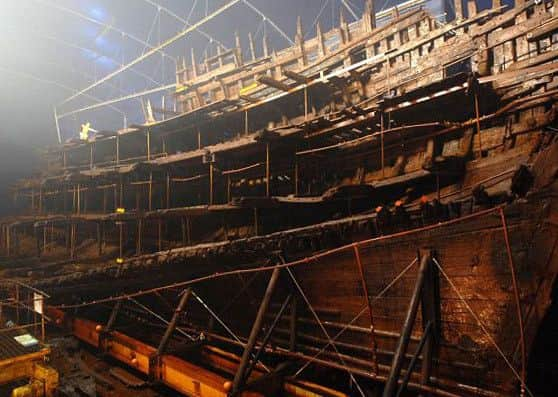Henry VIII’s flagship on the Flodden trail


The historic vessel was built just two years before the Battle of Flodden and played a key role in early 16th century raids against the French.
It has become a huge attraction for the Mary Rose Museum, based in Portsmouth Historic Dockyard, with more than 250,000 people visiting since it opened in May.
Advertisement
Hide AdAdvertisement
Hide AdIt is now displaying a Flodden 1513 Ecomuseum plaque which will help to raise awareness of the battle and, hopefully, encourage more people to visit north Northumberland and the Borders.


Rear Admiral John Lippiett, chief executive of the Mary Rose Trust, which salvaged the ship in 1982 and has been carrying out conservation work ever since, said: “We are delighted to strengthen our association with Flodden and wish them every success in this important year.”
The new additions to the ecomuseum - described as a museum without walls - include churches, bridges, castles and museums from all over the country.
The new sites stretch from Suffolk and Portsmouth in the south to Manchester and Galloway in the west and Renfewshire and Stirling in the north.
Advertisement
Hide AdAdvertisement
Hide AdIt brings the total number of sites in the network to 41, all of which are directly or indirectly linked to the battle itself, or which contain a battle artefact or help the public understand more about the 16th century landscape or border warfare.
Lord Joicey, director of the Flodden 1513 Ecomuseum and on whose land the battlefield lies, said: “We’re delighted to have such a diverse and extensive range of new ecomuseum sites which all help to remember the Battle of Flodden and to educate and inform people about its role in our shared English and Scottish history.
“The first task of the Flodden 1513 Ecomuseum was to coordinate events leading up to September 9, the 500th anniversary of the battle itself; now our focus is on building and strengthening the community-owned heritage network where memories, culture, traditions and history are protected and shared with local people and visitors.”
Representatives from many of the ecomuseum sites were at Berwick’s town hall on Thursday to hear about the success of the 500th anniversary events which included a common ride of almost 500 horses and riders.
Advertisement
Hide AdAdvertisement
Hide AdThey also heard from Prof Peter Davis, Newcastle University academic and world authority on ecomuseums.
Lord Joicey said: “Peter Davis’ input has been invaluable. we aim to develop the ecomuseum for education, involving schools on both sides of the border and add to our knowledge about the event through historical and archaeological research.
“We also hope the heritage network now in place will strengthen the value of all Flodden-related sites for both tourists and local people.”
The expansion of the UK’s first cross-border ecomuseum is just one element of the four-year £1.3m project, funded by the Heritage Lottery Fund.
Advertisement
Hide AdAdvertisement
Hide AdThe ecomuseum concept - which focuses on the interconnected heritage of an event - is common on the continent. The Flodden 1513 Ecomuseum started by linking together 12 sites that have an intimate connection with the story of Flodden. Of the 41 sites now included, 24 are in the Tweed valley.ho